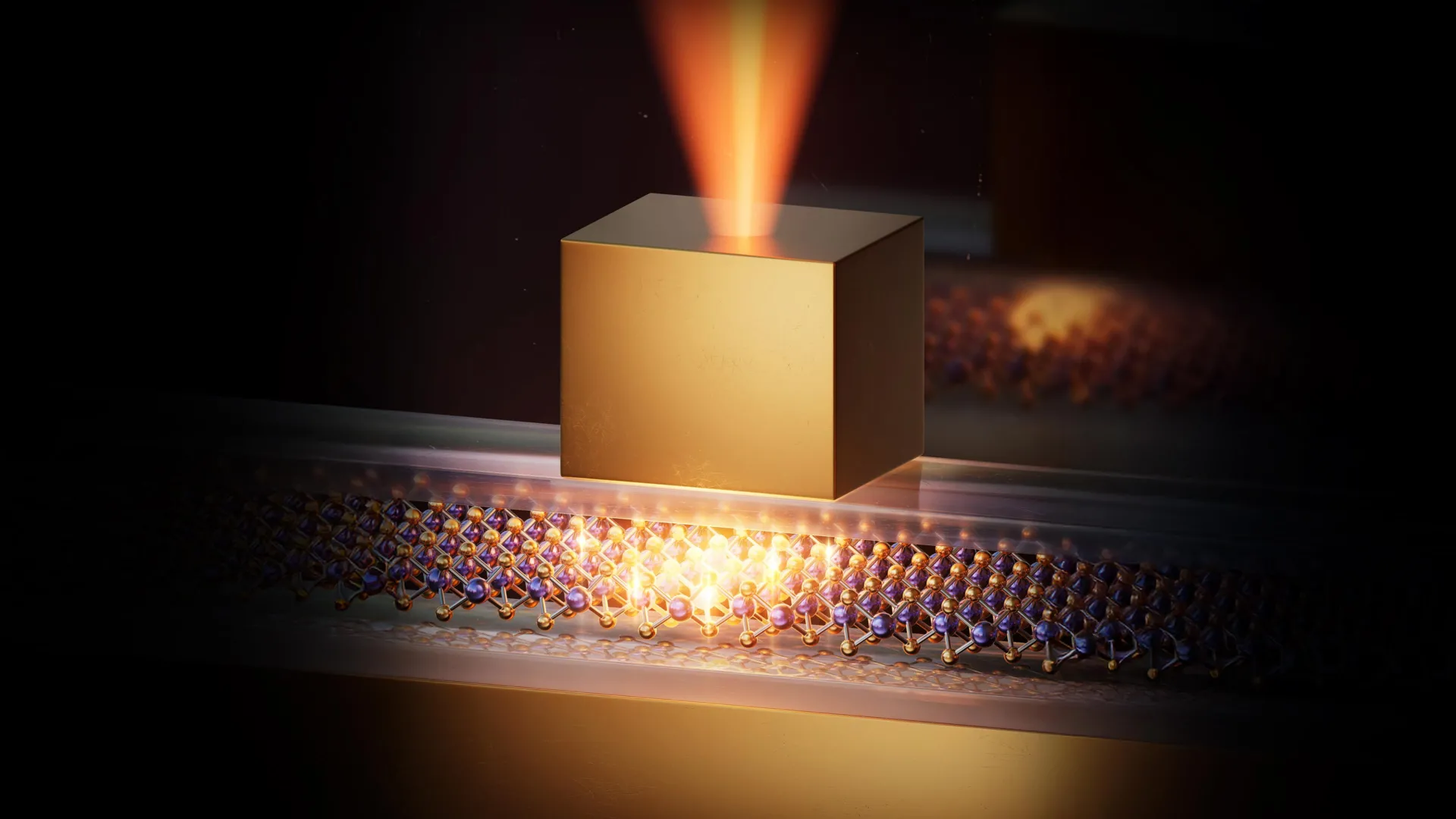Nanoscale trick makes “dark excitons” glow 300,000 times stronger
Hidden states of light have finally been lit up and controlled, opening bold new frontiers in photonics and quantum tech.
- Date:
- November 19, 2025
- Source:
- Advanced Science Research Center, GC/CUNY
- Summary:
- Researchers have found a way to make “dark excitons”—normally invisible quantum states of light—shine dramatically brighter by trapping them inside a tiny gold-nanotube optical cavity. This breakthrough boosts their emission 300,000-fold and allows scientists to switch and tune them with unprecedented precision. The work unlocks new possibilities for ultrafast photonics, on-chip quantum communication, and exploring previously unreachable quantum states in 2D materials.
- Share:

A research group at the City University of New York and the University of Texas at Austin has found a method to make dark excitons, a class of previously unseen light states, emit bright light and be controlled with nanoscale precision. The study, published November 12 in Nature Photonics, points toward future technologies that could operate faster, use less energy, and shrink to even smaller sizes.
Dark excitons form in ultra-thin semiconductor materials and normally remain undetectable because they release only faint light. Even so, scientists have long viewed them as promising for quantum information and advanced photonics because they interact with light in unusual ways, remain stable for relatively long periods, and experience less disruption from their surroundings, which helps reduce decoherence.
Amplifying Dark Excitons With Nanoscale Design
To bring these hidden states into view, the researchers created a tiny optical cavity built from gold nanotubes combined with a single layer of tungsten diselenide (WSe2), a material just three atoms thick. This structure increased the brightness of dark excitons by an extraordinary factor of 300,000, making them clearly observable and allowing their behavior to be precisely controlled.
"This work shows that we can access and manipulate light-matter states that were previously out of reach," said principal investigator Andrea Alù, Distinguished and Einstein Professor of Physics at the CUNY Graduate Center and founding director of the Photonics Initiative at the Advanced Science Research Center at the CUNY Graduate Center (CUNY ASRC). "By turning these hidden states on and off at will and controlling them with nanoscale resolution, we open exciting opportunities to disruptively advance next-generation optical and quantum technologies, including for sensing and computing."
Electric and Magnetic Control of Hidden Quantum States
The team also demonstrated that these dark excitons can be switched and adjusted using electric and magnetic fields. This level of control could support new designs for on-chip photonics, highly sensitive detectors, and secure quantum communication. Importantly, the method preserves the original characteristics of the material while still achieving record-setting improvements in light-matter coupling.
"Our study reveals a new family of spin-forbidden dark excitons that had never been observed before," said first author Jiamin Quan. "This discovery is just the beginning -- it opens a path to explore many other hidden quantum states in 2D materials."
Solving a Debate in Plasmonics
The findings also address a long-standing question of whether plasmonic structures can boost dark excitons without altering their fundamental nature when placed in close proximity. The researchers solved this by designing a plasmonic-excitonic heterostructure made with nanometer-thin boron nitride layers, which proved essential for revealing the newly identified dark excitons.
The work received support from the Air Force Office of Scientific Research, the Office of Naval Research, and the National Science Foundation.
Story Source:
Materials provided by Advanced Science Research Center, GC/CUNY. Note: Content may be edited for style and length.
Journal Reference:
- Jiamin Quan, Michele Cotrufo, Saroj Chand, Xuefeng Jiang, Zhida Liu, Enrique Mejia, Wei Wang, Takashi Taniguchi, Kenji Watanabe, Gabriele Grosso, Xiaoqin Li, Andrea Alù. On-site enhancement and control of spin-forbidden dark excitons in a plasmonic heterostructure. Nature Photonics, 2025; DOI: 10.1038/s41566-025-01788-w
Cite This Page: